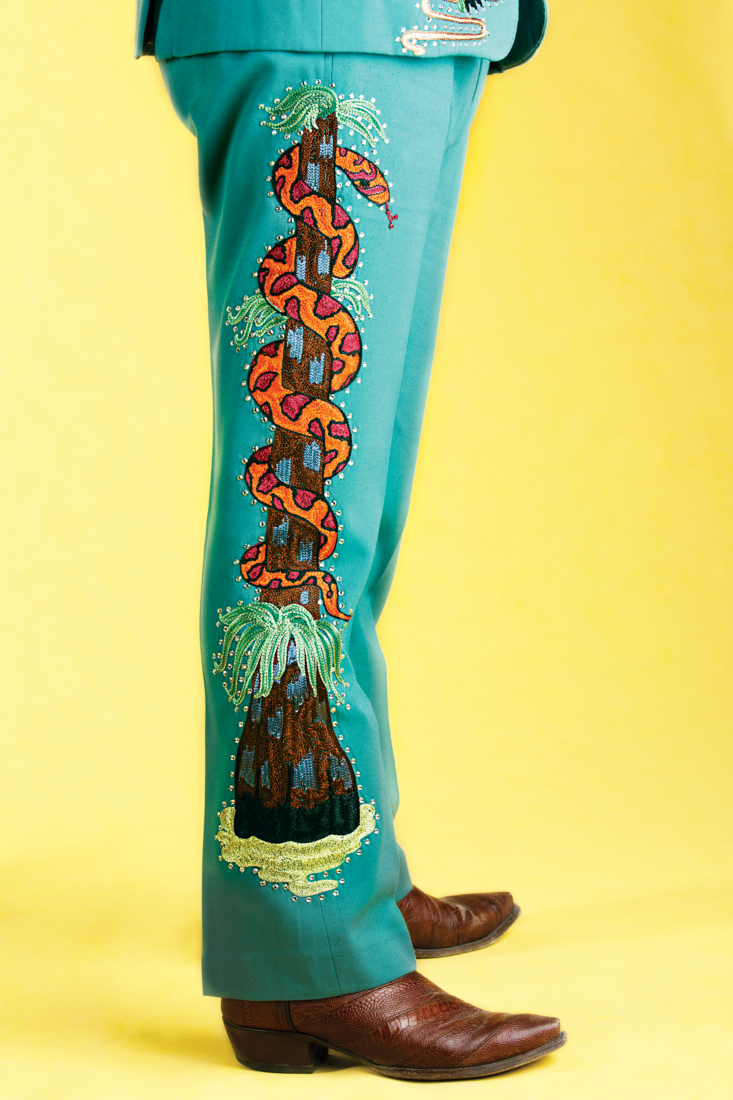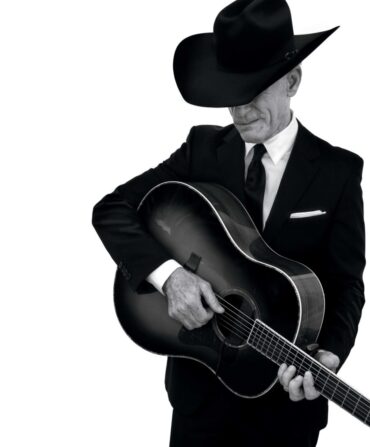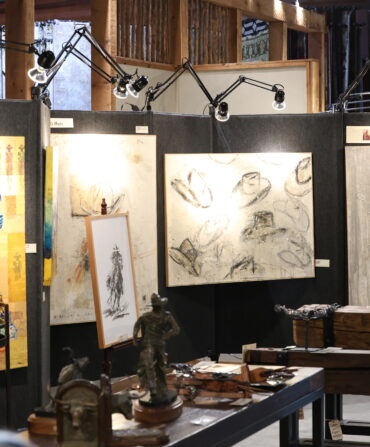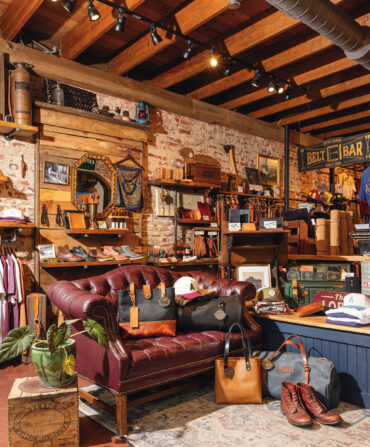It’s five days until the MTV Video Music Awards, and Jerry Lee Atwood’s small Union Western tailor studio buzzes with activity.
Atwood created Lil Nas X’s Western suit for his groundbreaking “Old Town Road” video, and three weeks before the awards show, the country rapper commissioned a new ensemble for the event. So Atwood has assembled a group of friends and loved ones to help out with the hurried haberdashery.
Pieces of the deconstructed suit litter the workspace. Atwood sits at one of the vintage Singer sewing machines in his Indianapolis studio, carefully attaching embroidery to a sleeve. Just a few feet away, one friend painstakingly hand presses one of more than four thousand individual rhinestones into the red fabric, while another sews the pants. Self-described “folk graffiti artist” Erin Hüber, Atwood’s girlfriend, designed the jacket’s special lining, featuring a lotus flower above wild horses, to evoke the feeling Lil Nas X requested.
“I probably miss out on some jobs not being in the thick of it all in Nashville or Los Angeles,” Atwood says, but living four hours north of Music City hasn’t stopped him from becoming the go-to tailor for its hottest acts. The Highwomen supergroup (Brandi Carlile, Maren Morris, Amanda Shires, and Natalie Hemby) all wore Union Western originals on their album cover, and modern-day troubadour Joshua Hedley did, too. Foo Fighters guitarist Chris Shiflett has commissioned a suit, as have a slew of country and Americana stars such as Nikki Lane.
He might be pop culture’s most popular new tailor now, but it took Atwood almost two decades to become an overnight sensation. At the beginning of that journey, he worked as a barista, doing simple embroidery as a hobby. When a frequent customer set a copy of the book Hillbilly Hollywood down on the counter, the trajectory of Atwood’s life suddenly changed. The volume examines, among other things, the work of Nudie Cohn, who revolutionized country-music fashion in the mid-twentieth century. Nudie suits became industry status symbols, with Elvis Presley, Porter Wagoner, and virtually every other big-time artist packing their closets with a rainbow collection of ensembles. (Johnny Cash’s were all in black, of course.)
“My dad was a huge country-music fan,” Atwood says, “and I remember seeing the artists wearing those beautiful outfits on so many album covers. I thought it’d be cool to make a Western shirt for myself one day.” So he taught himself how to sew through books, working at a local theater company to hone his tailoring skills. Soon after he made his first shirt, he began crafting them for friends, then customers. When he received his first commission for a full suit, “I saw the potential for an actual career,” Atwood says. “I realized this is what I wanted to do with my life.”
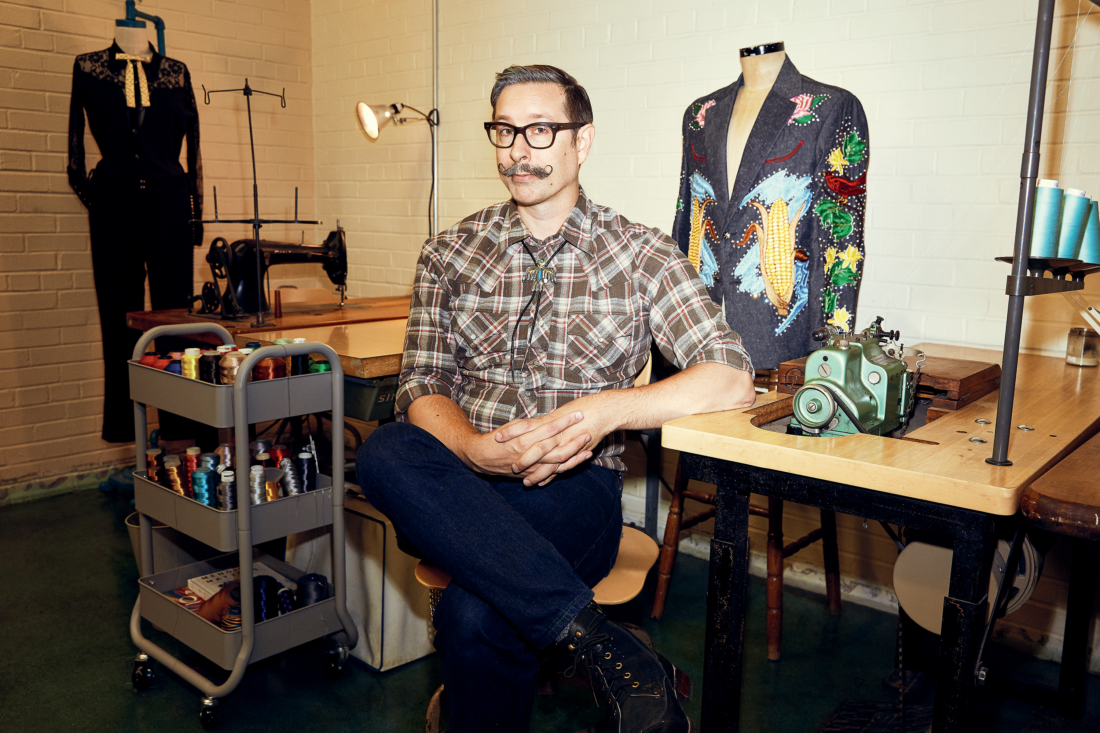
Photo: Clay Cook
Jerry Lee Atwood in his studio.
During a brief revival of the Nudie brand several years ago, Atwood even embroidered about a dozen pieces that would bear the iconic label, but he largely struck out on his own. Hollywood stylists spotted him on Instagram, which led to
his creating a custom suit for the pop star Post Malone, a now-frequent client. A mention in Vogue and a surreal Halloween where kids dressing up as Malone did so in homemade re-creations of Atwood’s suit followed.
The real deal takes Atwood as long as 120 hours to create. Although he interacts primarily with industry stylists, he prefers to collaborate directly with the musicians themselves on the concept. After sketching a design and getting it approved, Atwood cuts out pieces of the outfit, and then uses a light table and a special hand-cranked sewing machine to embroider, say, dice, slot machines, and gold coins for Lane’s “Jackpot” song suit, or Florida panthers and herons for Hedley’s. Atwood spangled one of his favorites, the space-inspired suit he created for the Americana star Robert Ellis, with stylized rockets and astronauts. He says Ellis gave him just a vague outline of what he wanted, but afterward, they were both over the moon with the results.
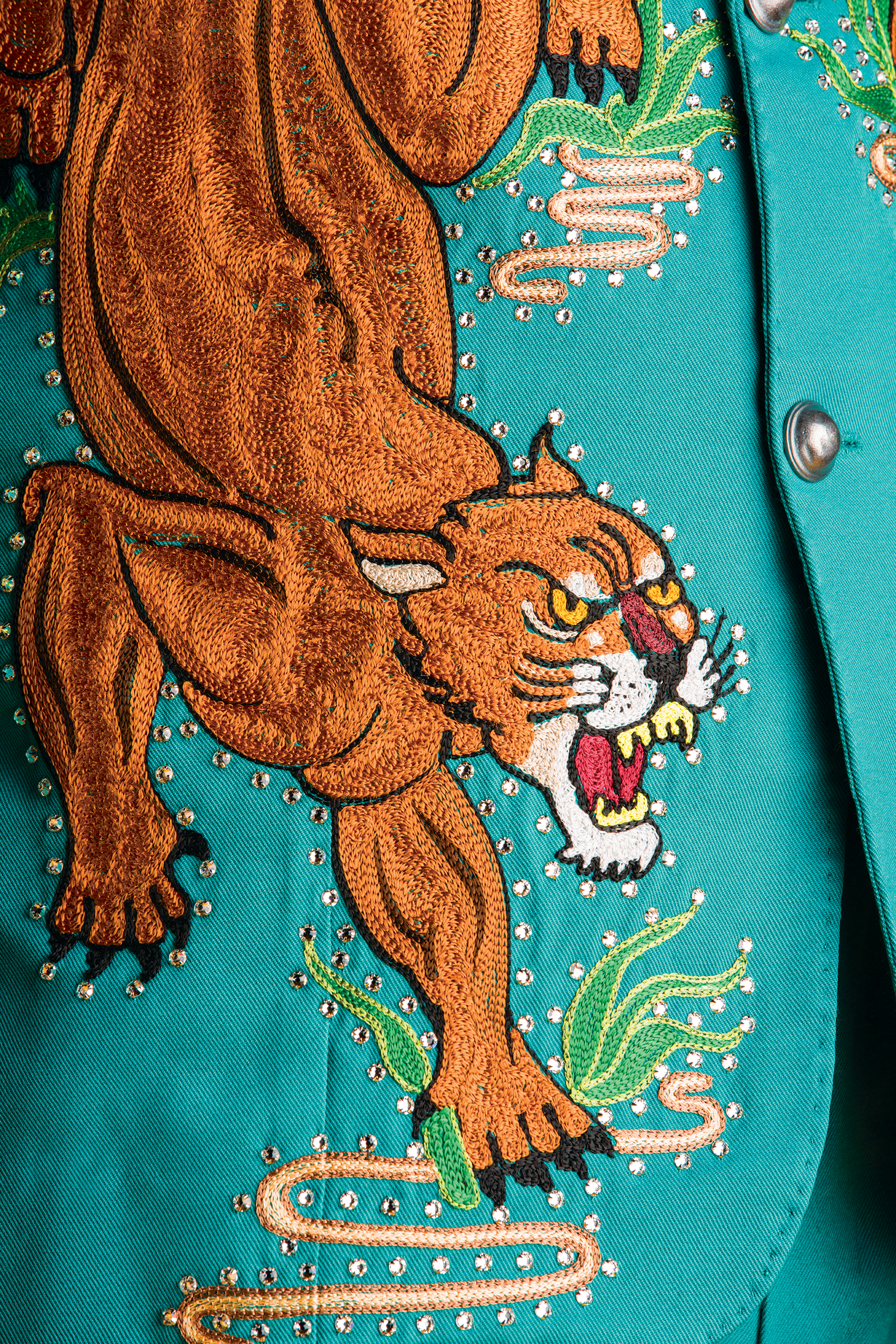
Jamie Goodsell
“Each suit tells a story,” Atwood says. “The client gives me some concepts and motifs, and then it’s up to me to make all of those elements blend together cohesively. Luckily, most artists respect that creative process and trust I’ll make something awesome for them.”
That gamble paid off for Lane. She met Atwood through a mutual friend, and soon after, he was taking her measurements. She received the suit before a career-defining Conan performance in 2017, and likens it today to “a royal garment.” As Lane recalls, “There was no time for error, and he made none. His color choices are exciting and completely spot-on, which is even more remarkable when you learn he’s color-blind”—a fact that hasn’t slowed Atwood. When Robert Ellis played at a local music club, the designer admits he teared up a bit seeing his creation worn onstage. As his designs continue to win acclaim, those kinds of moments still feel surreal.
“When I first got into this, I thought Western wear had died with Nudie,” Atwood says. “I never imagined it would have this pop-culture resurgence. I’m proud to be part of that long lineage. If I can’t be a musician, this might be the next best thing. I like to think I’m making my own mark in music history.”


